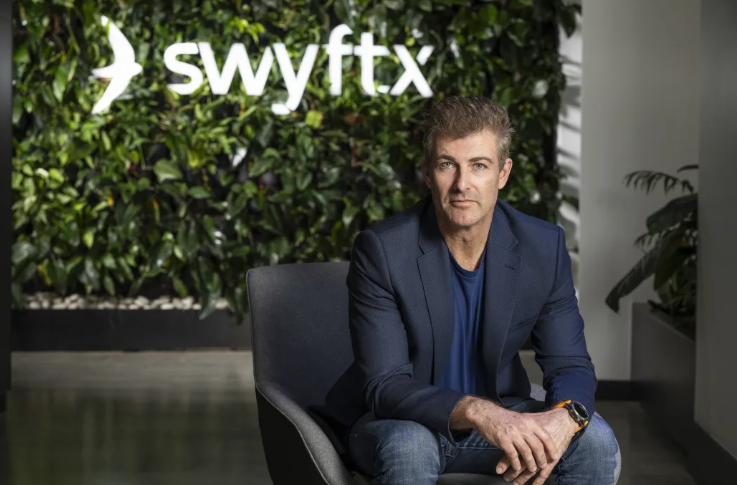The recent Swyftx Annual Crypto Survey has uncovered the young Australian population’s attitudes towards digital currencies. The survey was conducted through YouGov in July 2025 and sampled 3,009 Australians from all over the country. The survey result indicated that as high as 40% of Australians below 35 years are wondering if they would have invested in Bitcoin a decade ago. The reason for this is mainly because they have observed the incredible rise in the price of Bitcoin and have missed the opportunity to get in on what is now considered by many to be the biggest financial opportunity of the decade.
The results of the survey indicate next to a shift in the investment pattern from one generation to another. At present, one-third of the Gen Z population is invested in Bitcoin, which is significantly higher than the 20% national average. For many, crypto is considered to be a way to get into the property market in Australia, especially since traditional properties are becoming unaffordable to most due to the skyrocketing prices. This has been the reality of the financial situation, which has led young investors to go for alternative wealth-building avenues, where the likes of Bitcoin and Ethereum are leading. The Crypto as a pathway to homeownership trend is now at the forefront of this shift among Australian young adults’ crypto investment communities.

Swyftx survey shows 40% young Australians regret missing a Bitcoin investment.
How Deep Is The Regret Over Missing Bitcoin?
The Swyftx survey reveals that Bitcoin is the most regretted neglected investment opportunity for Australians under 35 years old. In the same vein, real estate 40% of millennials and Gen Zs would have liked to invest in Bitcoin a decade back. The feeling of regret is justified when one considers the facts. Since 2015, Bitcoin’s price has increased by more than 40,000%. During the same period, the value of Apple stocks has gone up by about 800%, and that of properties in Australia has gone up by only 74% on average.
Even with these fantastic gains, the younger investors’ level of contentment is still quite low. Just 4% of Generation Z and Millennials think their investment decisions made ten years ago were right. The percentage goes slightly higher for the Baby boomers (12%) and even higher (20%) for older Australians over 70. This discontentment is indicative of both the lost chances and the uncertainty about the right way of investing in the ever-changing investment environment, including the Bitcoin and property market in Australia 2025, dynamics.
What Is Stopping More Aussies From Investing In Crypto?
Despite the strong interest in crypto, the rates of ownership have not improved. The poll indicated that merely 20% of Australians are owners of crypto, and this figure is the same as last year. A rising trust gap might be a reason. The net distrust in digital assets rose to 60%, which is 3% higher than 2024’s figure.
According to Jason Titman, CEO of Swyftx, this mistrust is due to the unclear regulations and the market volatility that is still prevalent. Almost half of the non-investors, or 46% said that “lack of regulation” is the main reason for them not to invest. Titman is of the view that this reluctance may disappear when the market becomes more mature and the regulations more stringent. “Younger Australians are used to assets that are not tangible,” he pointed out, “and they consider crypto as a part of a diversified investment portfolio.”
Moreover, he mentioned that a lot of the young investors are spreading their investments among different asset classes, crypto being one of them and balancing it with the traditional options like ETFs and shares. Nevertheless, the convenience, accessibility, and global reach of crypto continue to attract the digital-savvy generations more than the traditional financial markets. This ongoing trend reinforces the Australian young adults’ crypto investment culture, where Crypto is a pathway to homeownership in Australia, becoming increasingly appealing.

Swyftx CEO says unclear rules fuel crypto distrust among young Australians.
Australian Young Adults’ Crypto Investment Shaping New Financial Goals
The trend of crypto investment among young adults in Australia highlights a significant cultural and economic shift. The rising property prices have put a burden on young Australians who have to give up the dream of owning a house early in their life. Rather, they are now focusing on flexibility, technology, and financial independence.
According to Jason Titman, this generational shift is transforming the way wealth is created in Australia. “The younger generation does not relate to the traditional Australian dream of owning a home anymore,” he said. “They view Bitcoin as a chance to get ahead.” He further stated that if the present scenario continues, crypto will surpass equities as the investment of choice for Generation Z and Millennials in a few years.
Bitcoin And Property Market Australia 2025: A Changing Dynamic
Australia’s Bitcoin and property markets in 2025 have made a surprising connection. The increasing property values have caused digital assets to get talked about in usual financial discussions. A significant number of analysts presume that young Australians are utilising their crypto gains to secure home deposits, hence making the two markets more connected than ever before.
The government policies are in a transitional phase, too. A draft legislation intended to bring digital asset platforms under the scope of the Australian Financial Services License (AFSL) was introduced by the Australian government in September. This action would result in the creation of two new categories under the Corporations Act: digital asset platforms and tokenised custody platforms.
According to Daniel Mulino, the Assistant Treasurer, the new law “will be a targeted expansion of the existing financial services laws.” The change is part of the overall plan of Australia to regulate the digital assets market. The United States, on the other hand, has already taken similar steps through the GENIUS Act and the CLARITY Act, which are both aimed at protecting investors and enhancing market stability.

The US advances crypto reforms via the GENIUS and CLARITY Acts for investor protection.
Crypto As a Pathway To Homeownership Australia: A Viable Future?
The declining housing affordability is a factor that has led to the idea of crypto being seen as a potential way to get a house in Australia becoming more and more accepted. The young Australians to whom the maturing digital asset markets could offer a feasible way to create long-term wealth are already in large numbers. There are many who now consider crypto as an investment, not a gamble, but a strategic move towards reaching the financial security that they aspire to.
The coming regulations, if successful, will be very effective in enhancing trust and security, and then it will not be long before crypto investments will be on par with the traditional asset classes. The enthusiasm of Gen Z and Millennials is a sign that a substantial change in the Australian financial culture is taking place, which is characterised by innovation, necessity, and the quest for new opportunities within the Bitcoin and property market in the Australia 2025 landscape.
Also Read: Crypto Market Reaction to Inflation Data: How US CPI Figures Could Shake Bitcoin and Altcoins
FAQs
- Why do young Australians see crypto as a property alternative?
The increasing property prices have made homeownership impossible for most, and this has led young Australians to invest in alternative assets such as Bitcoin.
- How many Australians currently own cryptocurrency?
Approximately 20% of Australians invest in crypto, with the largest number being among the young, about one-third of Gen Zs.
- What are the main barriers to crypto adoption in Australia?
The main obstacles include a lack of regulation, price volatility, and trust issues with digital currencies.
- Could crypto really help young Australians buy homes?
Maybe yes. It is possible for the crypto gains to be used in putting up deposits, especially with the clarification of regulations and the ensuing wider adoption.

